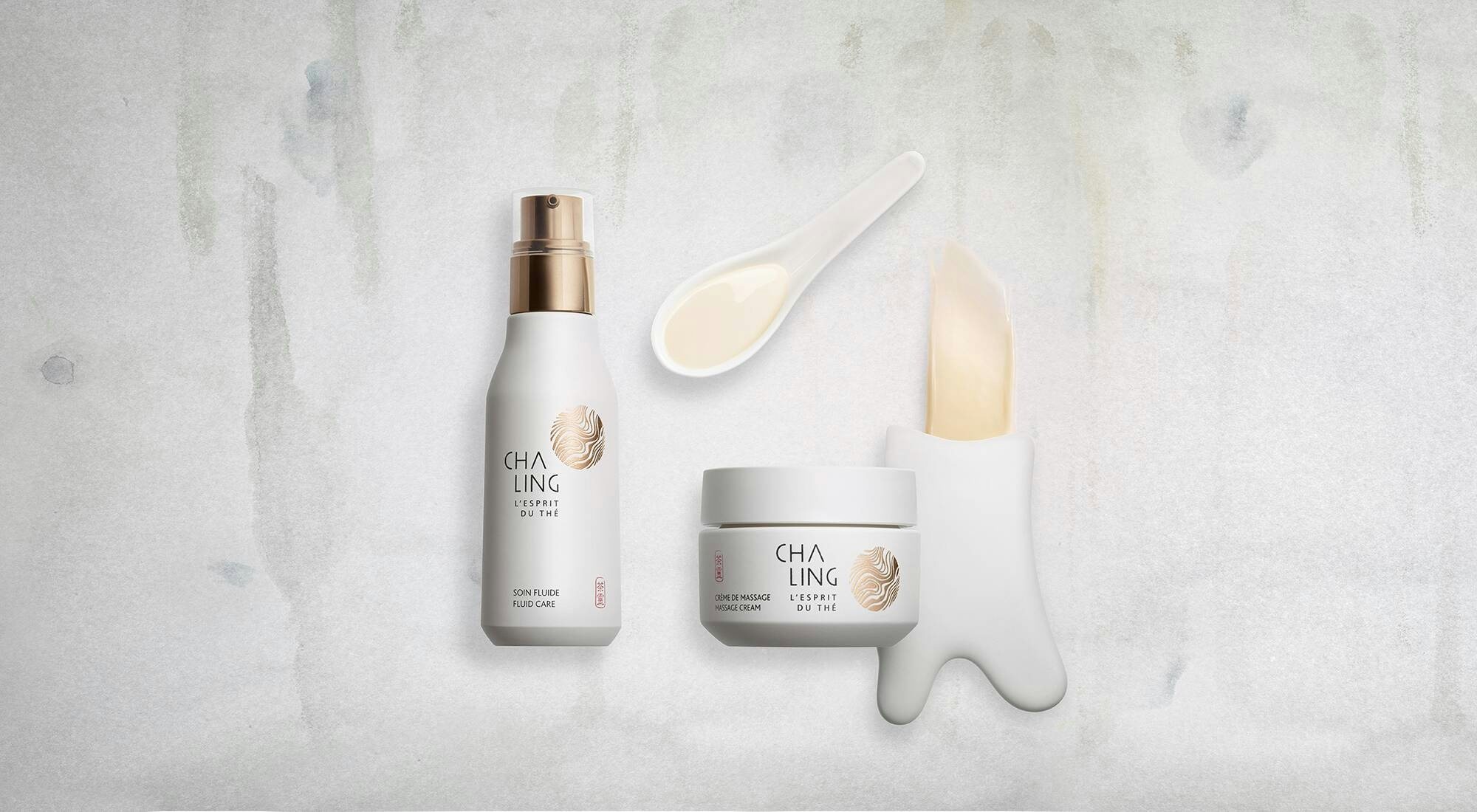Beauty fanatics in the West probably haven’t heard of Cha Ling 'Esprit du Thé, the secretive but highly-praised Chinese brand backed by French luxury conglomerate LVMH, but Chinese beauty connoisseurs have come to love the brand that’s “infusing beauty with the spirit of tea.”
According to an LVMH press release, the Cha Ling beauty line was born following an encounter between Laurent Boillot, Chairman and Chief Executive Officer of Guerlain, and two passionate environmentalists: German biologist Josef Margraf and his Chinese wife Li Ming Guo. The three gathered with the ambition of trying to protect the natural beauty of the beloved Yunnan province, the territory that produces some of China’s finest teas, including the cherished Pu’ Er tea.
LVMH states that Pu’Er tea is made thanks to the Bulang people “keeping ancestral traditions preserved,” and it takes decades for it to achieve perfection. The tea is a key component for this LVMH-backed cosmetic line because of its powerful anti-aging, moisturizing, and skin-healing attributes. But despite the promising combination of LVMH’s cosmetic expertise and Pu’Er tea’s competence, some beauty professionals are pessimistic that the domestic brand will ever become an international success story.
Despite their concerns, Cha Ling has evolved at the right time and in the right market. According to the Global Cosmetics Market — by Product, Type, Ingredient, Region — market Size, Demand Forecasts, Industry Trends, and Updates (2018-2025) report, the global cosmetic market was valued at $507.75 billion in 2018 and is expected to reach $758.45 billion by 2025, growing at a robust rate of 5.9 percent. Furthermore, Acumen Research and Consulting is projecting that the global skincare products market will reach $184 billion by 2026.
As reported by Acumen Research and Consulting, the Asia-Pacific market is expected to show its highest growth thanks to “the ease of availability of a wide range of skincare products, growing awareness towards health and beauty, and huge demand for various skincare products.” And according to Euromonitor, the total retail sales of skincare products in China accounted for $30 billion (212.2 billion RMB) in 2018, while the total volume of makeup products reached $6 billion (42.8 billion RMB), representing year-on-year growth of 13.2 percent and 24.3 percent, respectively.
As you can see, the cosmetic market is a highly lucrative segment in China, but one that was, for decades, completely conquered by international brands (L'Oréal S.A, The Estée Lauder Companies). Nevertheless, home-grown brands like Cha Ling starting gaining traction when Chinese consumers began seeing them as an appealing option. HKTDC Research emphasizes that the domestic, high-end cosmetic industry has performed impressively, reaching a market share of about 56 percent. That stellar growth is the result of the excellent use of domestic social media platforms, a strong online presence, and expansion into Tier 2 and Tier 3 cities. And the same research mentions that organic cosmeceuticals (Chinese herbal cosmetics) are gaining momentum. Yet, despite all of this, there’s still room for improvement.
“Cosmeceuticals only make up about 20% of the market in the mainland at present,” the HKTDC Research states, “whereas in Europe, the U.S., Japan, and South Korea, cosmeceuticals command a 50-60% share.” At first glance, the market conditions seem favorable for Cha Ling — a brand that merges French savoir-faire with Chinese values — but beauty experts have identified the four following challenges the brand will face in expanding in China and beyond:
1. T
he reign of international brands#
Up until 2013, China was a playground for global brands, and they completely overshadowed the local players. Ubifrance states that international brands owned around 60 percent of a $15.5-billion market: “At the end of 2012, L’Oréal was marketing 20 brands in China, among which are Maybelline and L’Oréal Paris, whose growth was around 12.4 percent per year. Clarins’ online sales increased by 500% between September 2012 and 2013.” Today, the market is friendlier to home-grown brands, but smaller players still find it difficult to challenge the international status quo.
Global players have a variety of competitive advantages like access to financial resources, large talent pools, new technologies, long-term global marketing strategies, and flawless distribution channels. With these selling points, it’s easy to annihilate smaller, domestic players. Fortunately, Cha Ling benefits from LVMH’s help and can take full advantage of the French conglomerate’s distribution channels, know-how, and marketing acumen.
2.
Brand image#
Over the past decades, various consumer safety scandals tainted the “Made in China” label, therefore, Chinese beauty buyers, according to Jing Daily, “still find foreign beauty brands more appealing than their domestic counterparts, believing that Western cosmetics offer higher quality.” Generally speaking, the country’s safety standards have improved, and the government rolled out a marketing strategy aimed at building consumer trust. Meanwhile, younger consumers have enthusiastically received the country’s “buy local” policy, but, despite this new hype, trust isn’t built overnight, and Chinese luxury buyers remain cautious about homegrown brands.
3.
Winning the innovation race#
To remain competitive, today’s beauty players need to innovate — and not just in cutting-edge technologies but also avant-garde ideas and new approaches or processes. Global beauty brands are investing in R&D while aggressively promoting technology-backed cosmetics.
According to Jing Daily, “augmented reality, 3D printing, smart beauty devices, and high-tech makeup, are revolutionizing the skincare market” in China. And lastly, Cha Ling must find new ways to incorporate innovation into all their processes and systems. For now, it does a tremendous job at balancing innovation with tradition.
4.
High cost#
Early-stage businesses require higher funding. That’s because, from the very beginning, the expenses associated with designing a new product line, adjusting the design to market requirements, testing samples, and advertising the final product can kill many startups. Emerging brands allocate the biggest chunk of their budget to marketing and promotional campaigns. Likewise, training high-potential employees and efficient mentoring programs come with a hefty price tag. But startups need to invest in new equipment, software, and servers, too.
In conclusion, for emerging brands like Cha Ling, it will take money to make money.
